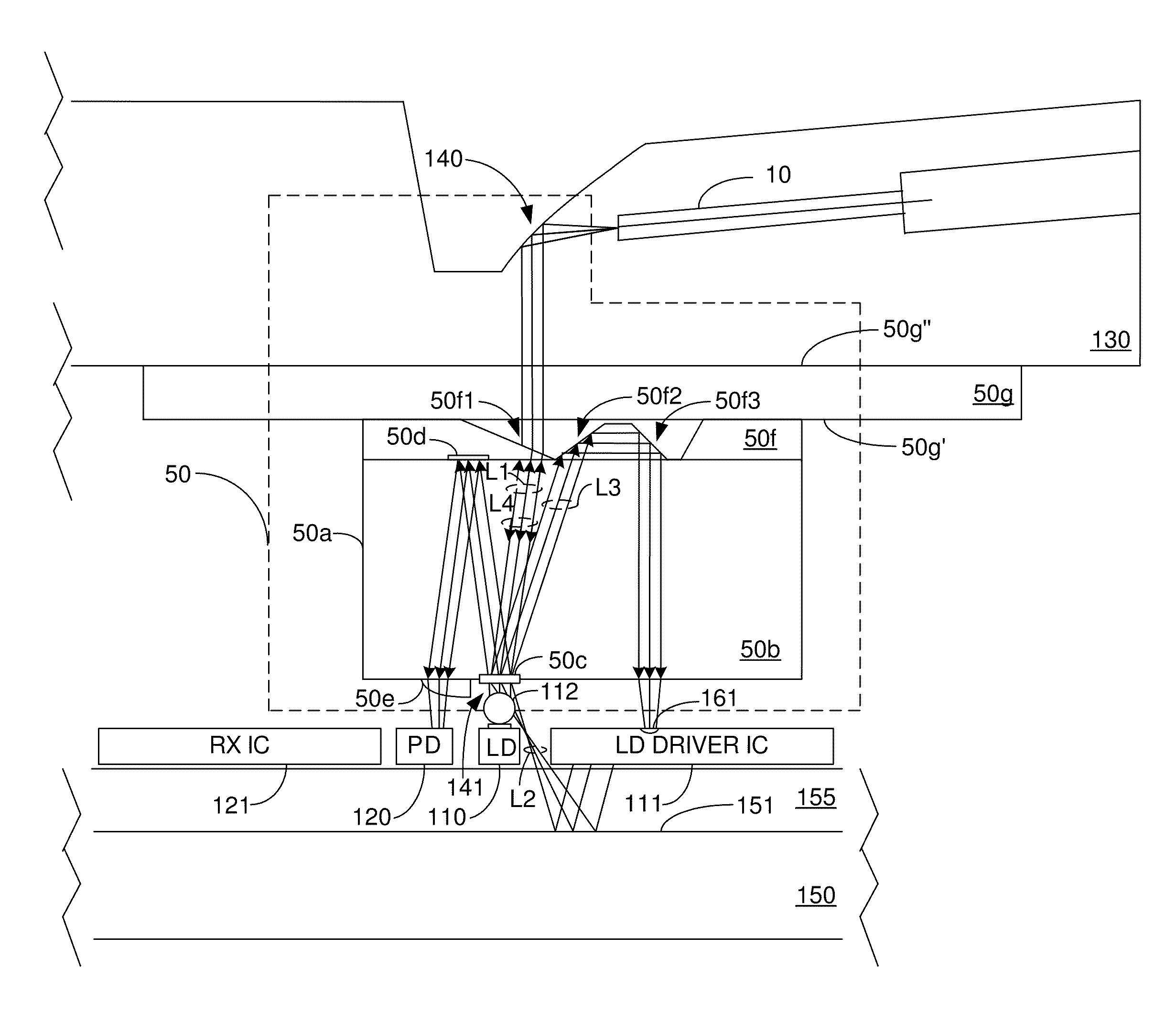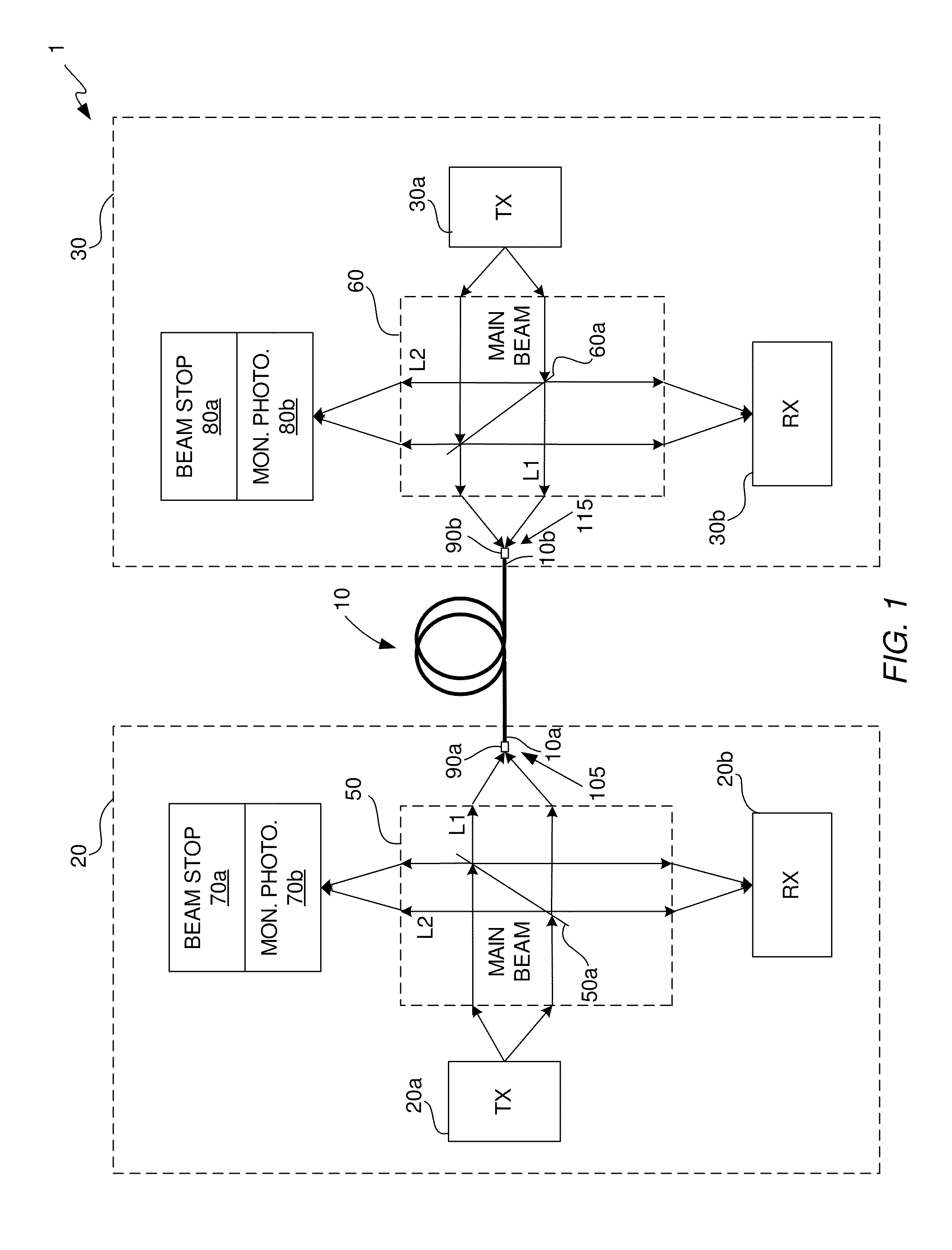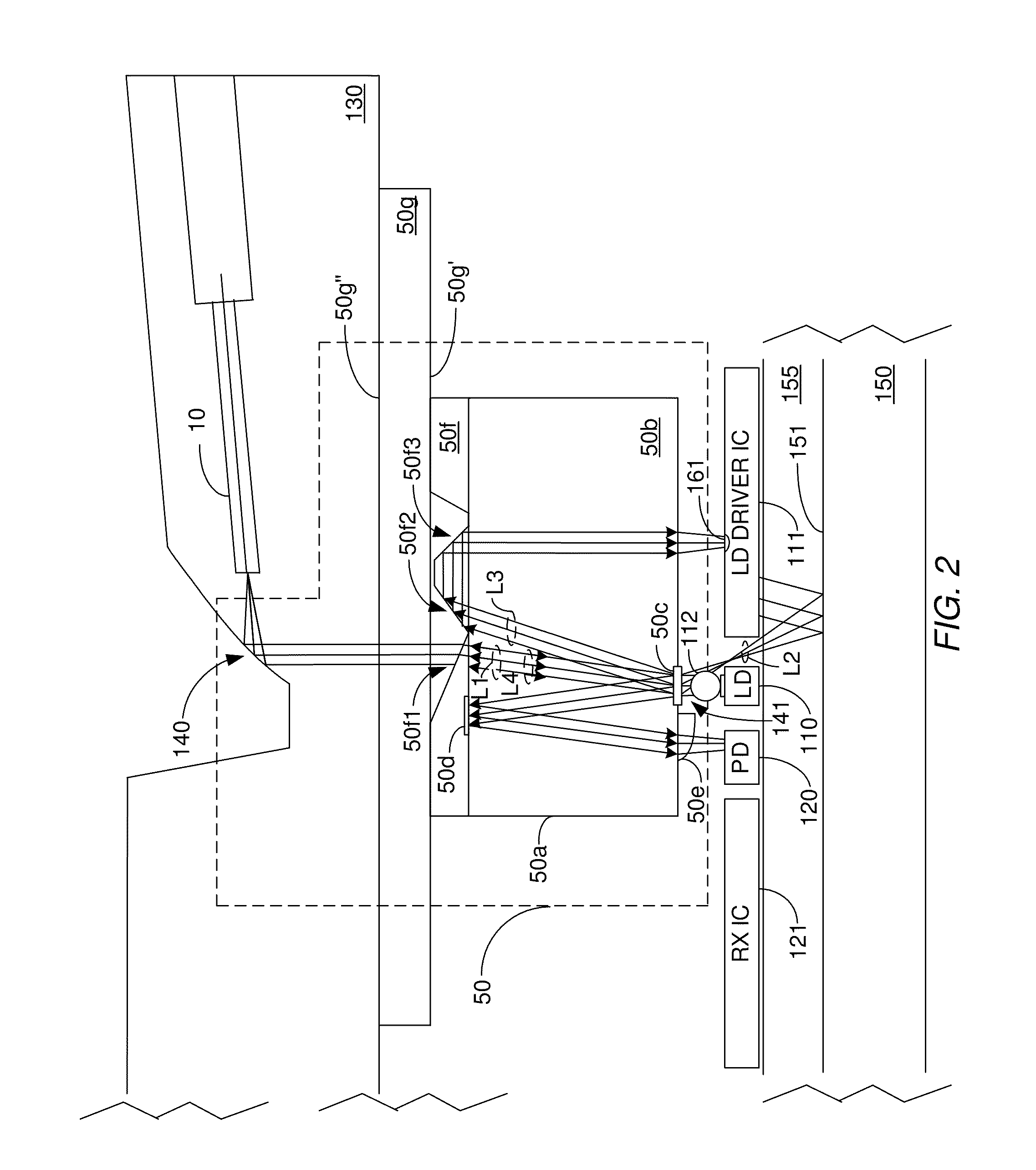Optical beam splitter for use in an optoelectronic module, and a method for performing optical beam splitting in an optoelectronic module
a technology of optoelectronic modules and optical beam splitters, which is applied in the direction of optical elements, semiconductor lasers, instruments, etc., can solve the problems of reducing the optical output power level of the laser to a level, and it is generally not possible, or at least very difficult, to run a laser
- Summary
- Abstract
- Description
- Claims
- Application Information
AI Technical Summary
Benefits of technology
Problems solved by technology
Method used
Image
Examples
Embodiment Construction
[0020]The invention is directed to an optical beam splitter for use in an optoelectronic module. The optical beam splitter is configured to split a main beam produced by a laser into at least first and second light portions that have different optical power levels. The first light portion, which is to be coupled into an end of a transmit optical fiber of an optical communications link, has an optical power level that is within eye safety limits and yet has sufficient optical power to avoid signal degradation problems. The first light portion has an optical power level that is less than the optical power level of the second light portion. The optoelectronic module in which the optical beam splitter is employed may be an optical transmitter module or an optical transceiver module. The optical communications link may be a unidirectional optical link or a bidirectional optical link. However, in order to demonstrate the various capabilities and advantages of the optical beam splitter, a ...
PUM
| Property | Measurement | Unit |
|---|---|---|
| tilt angle | aaaaa | aaaaa |
| tilt angle | aaaaa | aaaaa |
| tilt angle | aaaaa | aaaaa |
Abstract
Description
Claims
Application Information
 Login to View More
Login to View More - R&D
- Intellectual Property
- Life Sciences
- Materials
- Tech Scout
- Unparalleled Data Quality
- Higher Quality Content
- 60% Fewer Hallucinations
Browse by: Latest US Patents, China's latest patents, Technical Efficacy Thesaurus, Application Domain, Technology Topic, Popular Technical Reports.
© 2025 PatSnap. All rights reserved.Legal|Privacy policy|Modern Slavery Act Transparency Statement|Sitemap|About US| Contact US: help@patsnap.com



